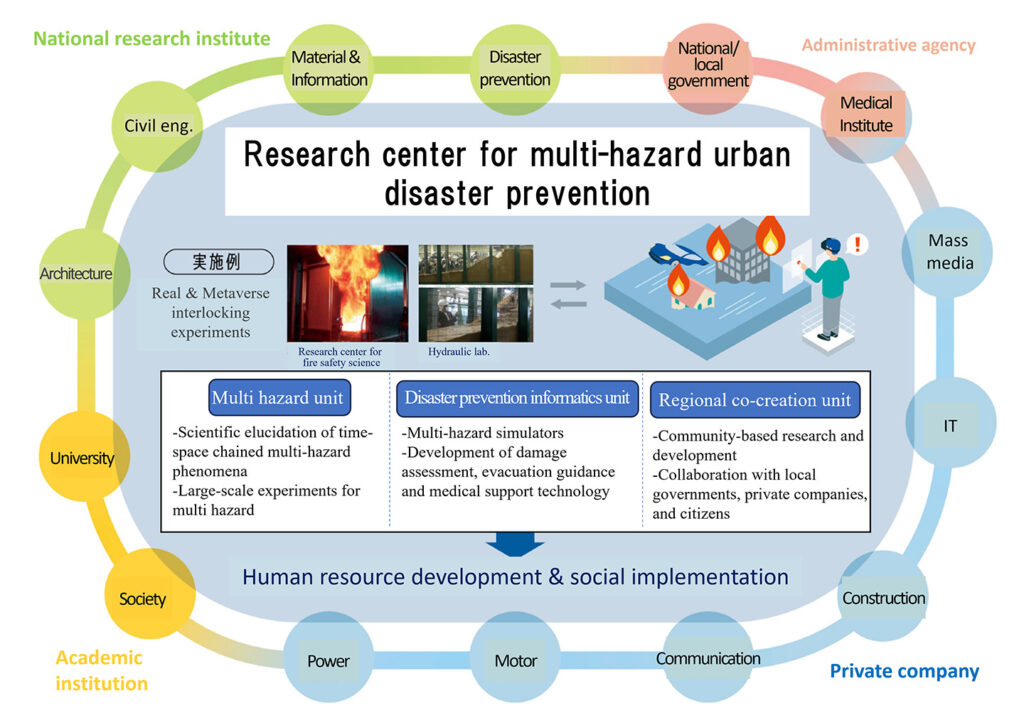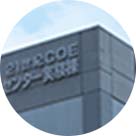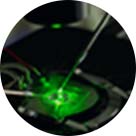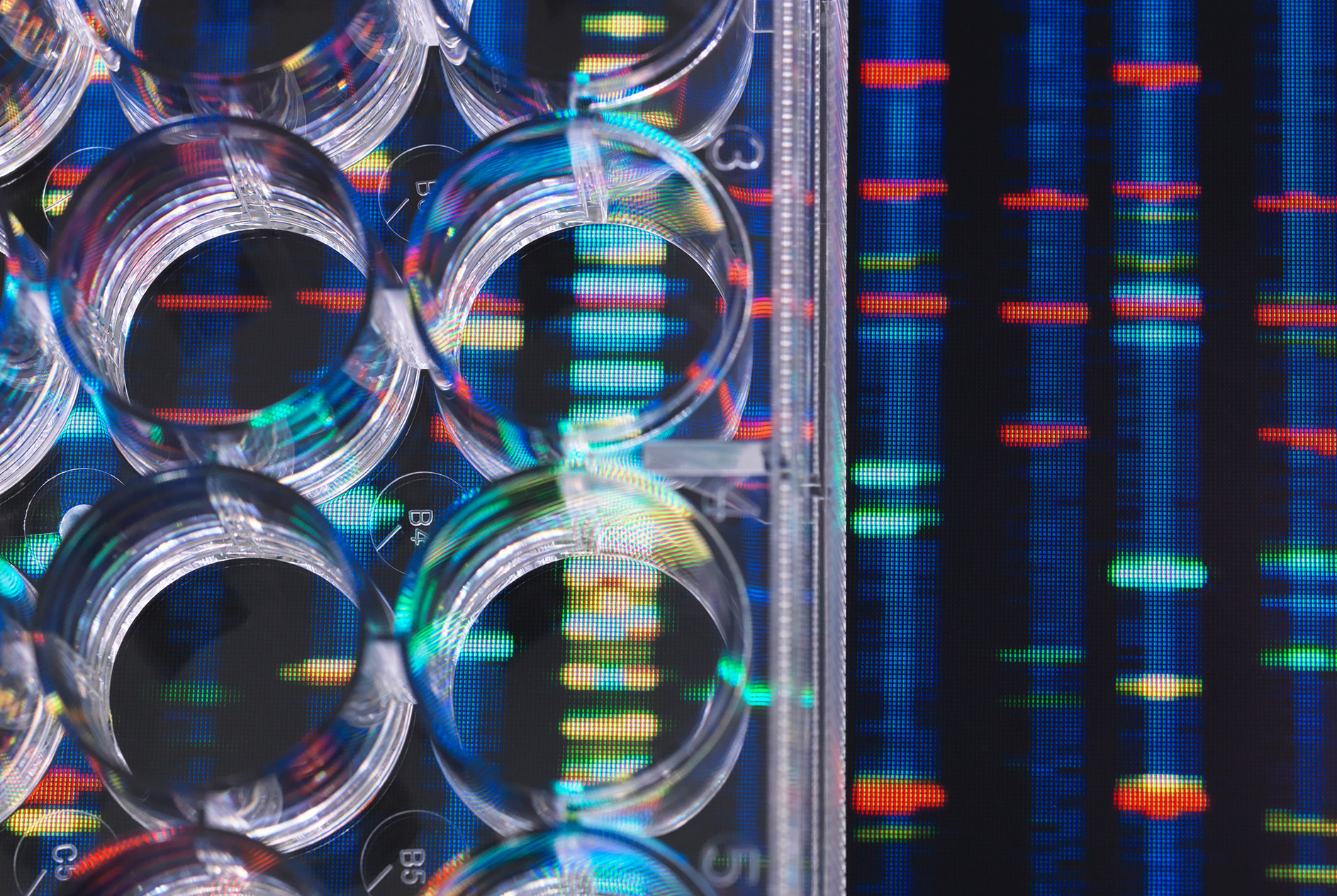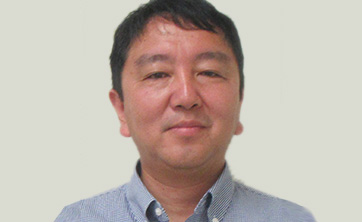Research Center for Multi-hazard Urban Disaster Prevention
What is multi-hazard?
Cities, the epicenters of population density and valuable assets, represent unique societal structures and living spaces teeming with skyscrapers and bustling with a vast network of transportation and information. The blend of order and intensity has peaked within these urban landscapes. However, these complex systems are vulnerable to chain reactions of devastation in the face of natural disasters, large fires, and the emergence of new infectious diseases. Should an element of the system fail, it can trigger a cascading collapse of others, leading to widespread social unrest, medical emergencies, and life-threatening situations.
Located in a region prone to frequent natural calamities, Japan presents significant urban risks from a global perspective. Particularly, earthquakes, tsunamis, floods, storm surges, strong winds, volcanic eruptions, and fires, as exemplified by historical events, such as the Great Kanto Earthquake of 1923, Great Hanshin-Awaji Earthquake of 1995, and Great East Japan Earthquake of 2011, pose significant threats. The nation’s future anticipates further calamities such as the Tokyo Inland Earthquake, Nankai Trough Earthquake, and super typhoons. The impact becomes even more severe when multiple hazards occur simultaneously within the same region, a scenario known as spatially chained multi-hazard. In such cases, the survival of the nation is at stake. Therefore, we must leverage previous research on each type of hazard, elevating it into an academic system that addresses these time-space chained multi-hazards. Our goal is to develop a comprehensive approach that transcends various disciplines, including science, engineering, life science, humanities, and social sciences. The advancement of urban disaster prevention science is essential in this endeavor.
Direction
At our center, our objective is to develop and apply innovative studies on time-space-linked multi-hazard urban disaster prevention. Our goal is to contribute towards building a safe, sustainable society that values diversity and ensures no one is left behind (Fig. 1). Our university houses numerous researchers specializing in disaster prevention across various hazards, including earthquakes, fires, and floods, as well as experts in data science. We intend to forge a new path in urban disaster prevention studies through two collaborative cross-sections: the synergy between disaster prevention researchers and the combined efforts of these researchers and data science professionals.
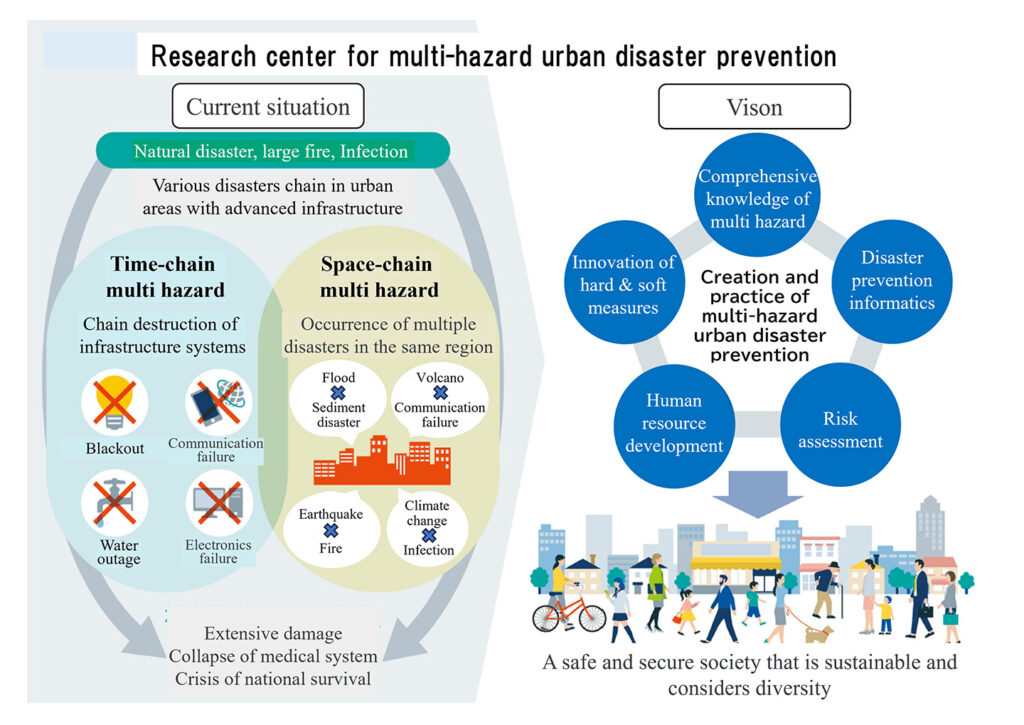
Research system
This center is composed of approximately 10 faculty members hailing from diverse faculties and graduate schools within the university. The research units include: (1) the Multi-Hazard Unit, led by Professor Satoshi Matsuyama from the Department of Global Fire Science, Graduate School of Science and Engineering; (2) the Disaster Prevention Informatics Unit, led by Professor Takahiro Yamamoto from the Department of Physics, Faculty of Science; and (3) the Regional Co-Creation Unit, led by Professor Takumi Ito from the Department of Architecture, Faculty of Engineering. Moving forward, the center will collaborate with external academic institutions (such as universities and scholarly societies), administrative bodies (including national and local governments, medical institutions), national research institutes (specializing in various areas including civil engineering, architecture, disaster prevention, and materials and information systems), and private sector entities (including sectors such as communication, electricity/gas, automotive, construction, IT, and media).
